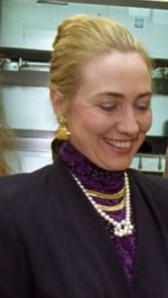That some freshwater pearls fade has long been an anecdotal factoid. Now it is confirmed as a factual fact. The Summer issue of the GIA (Gemological Institute of America) magazine contained a long technical report on their examination of some Edison and other non-branded bead nucleated freshwater pearls which were supplied to them by The Edison Pearl Company (Grace Pearl) HQ’d in Zhuji.
Bead nucleated freshwater pearls (BNFW) are a comparatively recent innovation in the farmed pearl market. They appeared at the end of 2010 with an initial auction in 2011. Most of them were then what are now called ripple pearls, big round and semi-round pearls with lush nacre ladled on in stunning colours and with a surface which can best be described as the skin on cold custard, wrinkled up – rippled. They had a luster which varied between silky like South Sea pearls and metallically shiny.Some were big, very shiny and smooth.
At that debut auction a string of violet Edison Pearls fetched over $800,000. BUT. Are those pearls still a stunning and innovative violet or have they faded to a regular-but-still-attractive pink?
In the nine years since their debut the rumours about ‘purple-fade’ have swirled around the pearl world. But it was hard to pin down.
Edison pearls are simply one brand of bead nucleated freshwater pearls from China. Bead nuked pearls can be divided into two main categories, depending on the quality of their nacre: either smooth or rippled. From this you can split the smooth into Edison (a brand from the pioneer of this type of pearl), Ming, (the second brand, not allied to any particular wholesaler) and generic bead nucleated pearls.
(Just to remind, until a few years ago freshwater pearls were usually all nacre, with pearl growth triggered by the insertion of just a sliver of mantle tissue into a host shell. It was only sea water pearls (South Sea, Tahitian, Akoya and a few freshwaters such as coin pearls) which had a bead template nucleus as well as that sliver of mantle tissue)
Edison is the brand name given to a range of large bead nucleated freshwater pearls from one leading Chinese supplier. One strand of these pearls achieved £1/2m at auction. The pearls come from a Hyriopsis hybrid between Hyriopsis cumingi and Hyriopsis schlegeli.
The Ming pearl name tends to be applied to the better quality of generic bead nucleated pearls. It is more of a description of quality than a brand. (Edison is a brand, belonging to one pearl farmer/wholesaler. They tend to be the most expensive and can be the finest quality available in the world)
At the same time the Edison company has for some years churned out strand after strand of dyed gold pearls as imitation gold South Sea pearls and, more recently, pearls dyed to resemble Tahitians as well as many strands of very shiny round white 8 and 9mm pearls clearly designed to usurp the Akoya market.
A few years ago the first jaw dropping violet and purple Edison pearls appeared. They were new, they were stunning, they were gorgeous. The colour was amazing. We scrambled to buy.
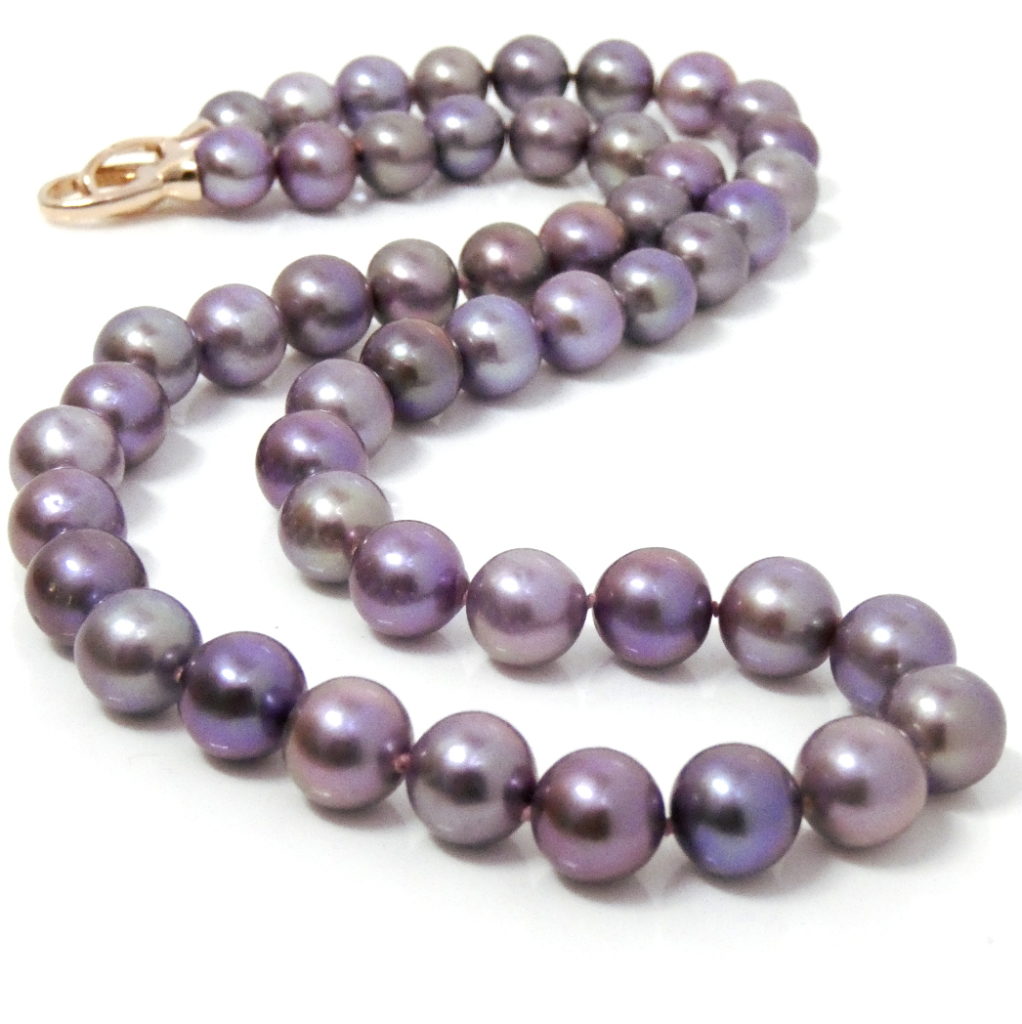
Then the chatter about colour fade started but it was hard to be exact about what was happening. Here at Pearlescence we started to hold all purple pearls for at least six months before putting them to the market, in hopes that this would be enough to weed out the faders. It was hard to quantify our success rate or otherwise
Until now. Not only have the GIA identified dyed Edison purple pearls but Pearlescence has a photographic record of what is happening. We had in some purple Edison pearls and this is the result:
This is what we found when we checked through our purple stock
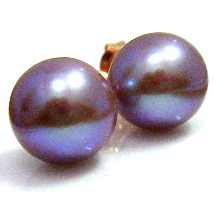
This lovely purple pair became
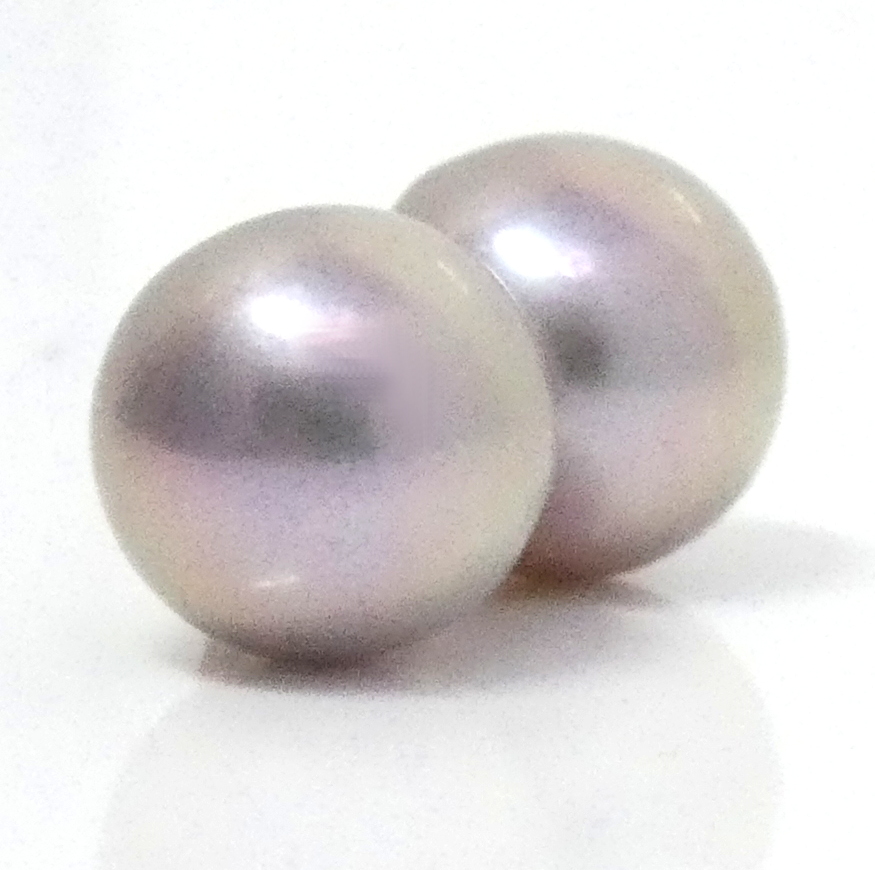
This rather nice pale pink and greenish pair.
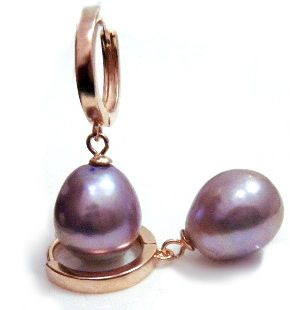
These very attractive purple huggie drops became
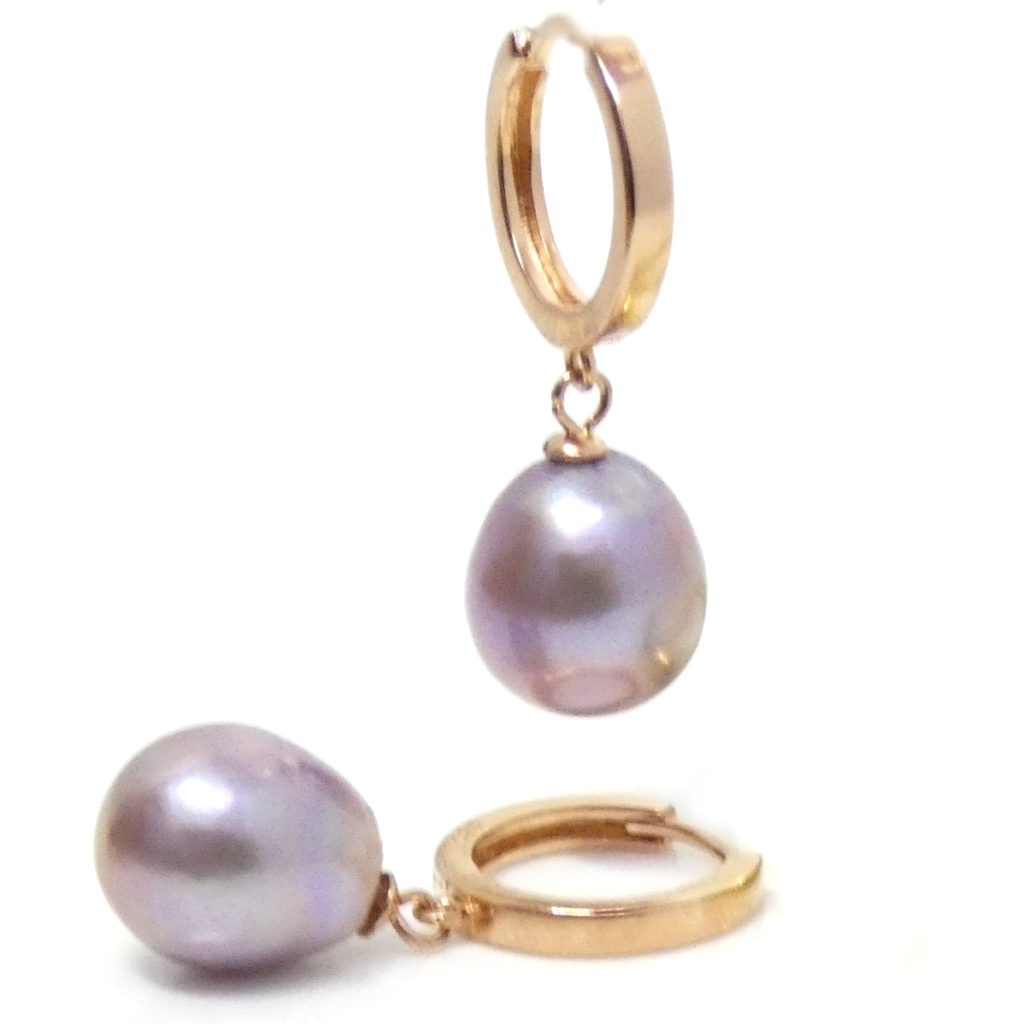
These misty lavender colour.
Now we know they have faded because we are very fussy about getting an accurate photo for uploading to the website for you.
The GIA’s report on their testing is in the Summer 2021 Gems and Gemology magazine.
Techniques such as microscopy, long wave UV fluorescence, long and short wave fluorescence, Raman Spectroscopy and trace element analyses were used to examine the pearls.
The report is technical but the upshot is that while two purple pearls (one of which was actually all tissue) had had no detectable treatments, another two (which looked exactly the same) had been colour treated.
So…buyer beware. And ask your vendor if they have held their purple pearls in stock to ensure no colour fade.
